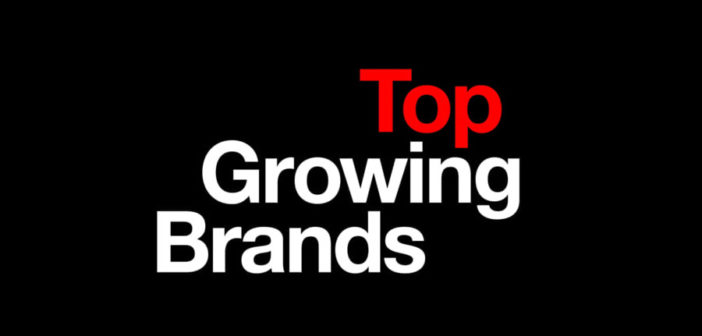It’s certainly no coincidence that the Top Growing Brands this year are the ones that have been defining examples of Activating Brave when it comes to making the bold decisions and taking the brave risks necessary in the short-term to achieve sustained growth. Like most of the Best Global Brands, the Top Growing Brands understand the value of their brands and cultivate them with great care. However, they also exhibit some key stand-out characteristics:
Customer as CEO
“The customer is king” is a tired phrase. In 2018, one would be hard-pressed to find a successful company that doesn’t put its customer front-and-center. That said, nowadays, there is a significant difference between customer-first and customer-centric. Being truly customer-centric today means going deeper than just offering a product or service that the customer wants, and truly recognizing how customers think, feel and behave, and then delivering the most optimized experience possible across each and every customer touchpoint.
In early 2000—almost 20 years ago—Amazon CEO Jeff Bezos said, “We seek to be Earth’s most customer-centric company for four primary customer sets: consumers, sellers, enterprise, and content creators.” Even during the online retailer’s early days, Bezos would go so far as bringing empty chairs into meetings rooms with his employees and saying that each chair represented a customer, which is “the most important person in the room.” Nowadays, one truly couldn’t find a more customer-centric company than Amazon. When people order household goods 24/7 from Amazon Prime, watch Prime TV shows, party at Prime Live Events, order clothes from subscription service Prime Wardrobe, or purchase sustainably-sourced groceries from recently-acquired Whole Foods, the company analyzes consumers’ interaction data, and then uses it to continually customize and enhance the Amazon experience for every single customer.
Another company that has customer-centricity engrained in its brand DNA is Netflix. In fact, Netflix can attribute its rapid transformation from its small beginnings as a mail-order DVD service to becoming the multi-Oscar award-winning media powerhouse that it is today to this very customer-oriented approach. Over time, the media juggernaut has tapped into data analytics to develop all-encompassing personal profiles of customer preferences and behaviors to both offer each customer a customized experience and to inform major investments in new media content, like the next Stranger Things or Orange is the New Black seasons.
Culture is strategy, strategy is culture
As motivational speaker Jim Rohn once said, “You are the average of the five people you spend the most time with.” Although Amazon CEO Jeff Bezos’ personal fortune is now estimated at around $120 billion, he got to where he is today because he mobilized a flock of more than 500,000 talented employees to get on the bandwagon to work towards his shared company vision. That can also be said of the way Amazon approaches the people it recruits, having always maintained a high standard when it comes to their caliber.
In its two-decade history, Netflix has invented (and reinvented) its company culture guidelines to align what the media entity aims to achieve in the marketplace to how it operates internally. Last year, the company updated its Netflix Culture manifesto on its website to express its employee empowerment principles, stating, for example: “You say what you think, when it’s in the best interest of Netflix, even if it is uncomfortable. You are willing to be critical of the status quo.You make tough decisions without agonizing. You take smart risks and are open to possible failure. You question actions inconsistent with our values. You are able to be vulnerable, in search of truth.”
PayPal also differentiates itself in its company culture to the extent that such strong bonds were formed in its founding days that led to the development of most of the post-PayPal unicorn companies like YouTube, LinkedIn, Yelp, Yammer, and Palantir. What’s more, so much of the culture of Silicon Valley as a whole has been modeled off PayPal back in the day, as its founders passed down their wisdom to their employees at PayPal and other companies.
Reinvent yourself before reinventing your industry
If there is any company that has truly disrupted itself in order to disrupt the retail industry and beyond, it’s Amazon, through its subscription service Amazon Prime, convenience store concept Amazon Go, ‘try before you buy’ online shopping service Amazon Wardrobe, or even its latest version of the Echo, called Look, that can deliver fashion advice.
Netflix is also a prime example of a company that has turned its business model on its head, from shipping DVDs by mail to streaming movies and TV shows digitally, to becoming one of the world’s most successful content creators, spending a colossal $12 billion on programming in 2018 alone.
Just five years after Adobe’s controversial decision to shift to a subscription service business model, it garnered a record revenue of $2 billion in Q4 of 2017. Tapping into cloud-based intelligence, the company can now deliver product improvements straight to users via cloud-based updates.
Mastercard has also demonstrated a willingness to reinvent itself from the inside-out and outside-in by developing and acquiring several services, and then packaging them together to sell to its customers and stakeholders.
–
This article first appeared in www.interbrand.com
Seeking to build and grow your brand using the force of consumer insight, strategic foresight, creative disruption and technology prowess? Talk to us at +9714 3867728 or mail: info@groupisd.com or visit www.groupisd.com


